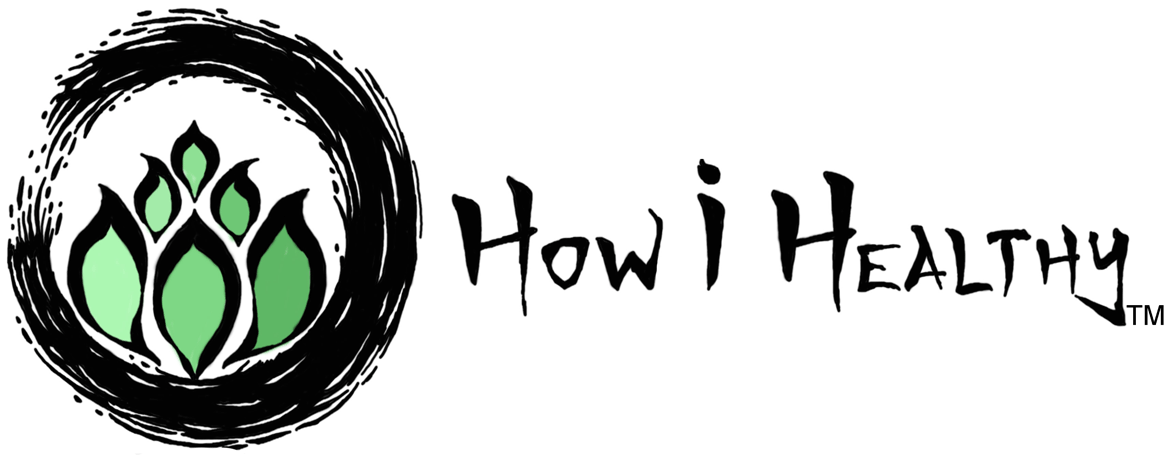In This Article, We'll Cover:
- The History of Oral Hygiene & Care
- The Problems with Today’s Oral Cleaning Products
- Why Water-Free Products Matter
- How i Healthy’s Favorite Zero Waste Teeth Products & Why
What we put in our mouth goes directly into our bloodstream, water sources, and landfills.
If you use conventional toothpaste & floss, then chances are microplastics, Teflon, phthalates, parabens, and a host of other things are mucking up your body and the environment. (24, 25, 28, 29, 30, 32, 35)
But there’s zero waste toothpaste & floss options that’ll keep teeth and the Earth clean!
An Oral History
Before we talk about options, let’s talk history!
The history of oral hygiene is particularly interesting.
What seems new to us, like plastic-free floss or waterless toothpaste, is actually the way things used to be. It’s a great example of how the past can offer solutions to modern day sustainability issues.
What’s old is new!
The Chew Stick & Its Significance
Early forms of dental hygiene tools include tree twigs, bird feathers, animal bones, toothpicks, and chew sticks. (34, 36, 37, 45)
Chewing sticks get a special shout out.
They date back to the Babylonians, over 7000 years ago. Evidence of chew stick use, both culturally and religiously, is found throughout parts of Africa, Asia, Middle East, and South America. To this day, chew sticks are used throughout the world and still hold cultural and religious significance. (36, 41, 43, 44)
Chewing sticks go by many names:
- Ethiopia: Mefaka
- India & Pakistan: Datun
- Japan: Koyoji
- Middle East: Miswak or Siwak
- Somalia: Adayge
- Tanzania: Mswaki
(36, 42, 44)
Despite the many names, the concept is similar: Chewing on a special type of wood frays the fibers, creating a brush-like tool. This cleans the teeth while the other end is sharpened and used like a toothpick. (36, 41)
Chew Sticks are roots, bark, or branches that can be made from approximately 182 different species including:
- African Laburnum
- Arak (Salvadora persica)
- Baloo or kikar (Vachellia nilotica)
- Neem
- Orange & Lime Trees
(36, 41, 44)
In Islam, chew sticks, or miswak can be sunnah, or religious custom. (41, 43)
For some Muslims, Miswak chewing is performed either before or during wuduh, the ablution that precedes salah (prayer). (41, 43)
Several studies concluded that chew sticks, specifically those from Arak root:
- Are packed with tannins, flavonoids, saponins, & other health-boosting compounds.
- Contain minerals found in teeth structure: fluoride, phosphate, & calcium.
- Have antifungal, antibacterial, anticariogenic (fights cavities), antioxidant, and antiplaque properties.
- Reduce gingivitis and promote wound healing.
- Produced similar whitening results when compared to commercial whitening toothpaste.
- When combined with tooth brushing, miswaks reduced dental plaque and improved gingival health better than tooth brushing alone.
(41, 42, 44)
Even when chew sticks aren’t in stick form the oral health benefits are there.
Chew stick-incorporated toothpaste & mouthwash reduced plaque and gingivitis better than regular fluoride toothpaste, tea tree oil toothpaste, and conventional mouthwash. (41, 42)
Toothbrushes & Floss
For cultures that did not use chew sticks, bone toothbrushes made from horse or wild boar hair were common. People of Tang Dynasty China wrapped animal hairs with wire, forming bundles. These bundles fit into small holes carved into one end of a long bone. (45)
Traders brought these animal hair toothbrushes to Europe and eventually America. But daily teeth cleaning was not a regular habit till WWI. England and the United States issued toothbrushes to all service members, which popularized their use. (48)
From 1901-1925 a New York-based company produced the “Indexo”. This rubber toothbrush slipped over the index finger and offered an alternative to animal hair tooth brushes. In general, though, animal hair was the go-to material until nylon replaced it in the 1940’s during WWII. (40, 48)
Speaking of nylon. Let’s talk floss.
There’s few historical accounts of threading teeth (flossing). But American dentist Levi Spear Parmly, popularized the notion. He advocated using a “waxen silk thread” between the teeth. (38, 39, 45)
Silk was the go-to for floss until the 1940’s. To produce a cheaper floss, Charles C. Bass created the first nylon floss. And nylon has been the standard for floss ever since. (45)
Toothpicks: A Gender Comparison Study
Toothpicks made from bone, ivory, metal, quills, and wood are found around the world and throughout history. (37, 46)
The Sumerians of Mesopotamia ~ 3000 BCE even used gold toothpicks! (50)
Toothpicks are a curious oral hygiene tool.
Toothpicks, unlike toothbrushes, were often used in public, and with that came genderized views of the habit.
Men with toothpicks were: “mavericks”, baseball players, actors like Taurean Blacque & James Dean, “rural working-class Americans”, “macho”, “cool”, or were singers who swapped cigarettes for toothpicks. (46)
But women who used toothpicks in public?
They were deemed “vulgar”, “ghastly” and improperly-trained “savages”. A 1960 account said that women toothpicking in public was as socially unacceptable as being nude. That’s a very different opinion than what a man tooth picking in that decade would hear. (46)
Toothpowders & Toothpastes
Beyond tools, peoples throughout history and the world used toothpaste too.
Toothpaste mixtures could contain upwards of 20 ingredients. (35, 40)
Egyptian formulas included rock salt, mint, iris, pepper grains, ox hooves ashes, myrrh, eggshells, and pumice. (35, 40)
The Aztecs used mixtures containing salt, honey, charcoal, and white ashes. (49)
Greek and Roman toothpaste recipes included crushed bones, oyster shells, powdered charcoal, and bark. (40)
Persian toothpastes dating around 1000 BCE featured dried animal parts, burnt snail shells, honey, herbs, incense, and powdered flint or gypsum. (40, 35)
Chinese formulas included flavor agents like ginseng, herbal mints, and salt. (35)
18th and 19th century British toothpaste included abrasives like bicarbonate of soda and brick dust. The British also tried to make toothpowders more palatable by adding and glycerin or sugar. Yep, sugar toothpaste. (35)
Napoleon I, Emperor of France, reportedly used opium-based toothpaste with his silver-gilt (vermeil) horsehair toothbrush. (47)
By 1892, commercial toothpastes, packaged in tin/lead (Pb) alloy tubes hit the shelves. (40)
Let’s reflect on that for a moment.
Toothpaste in a lead tube. No thanks, I’ve had My Share of Lead Toxicity.
Sure enough, folks later discovered lead leeched into those toothpastes. (40)
By WWII, lead (Pb) and tin were needed for the war effort. Not for toothpaste tubes. The hunt for a cheap alternative led to laminated toothpaste tubes made from aluminum, paper, and plastic. These tubes eventually evolved into the plastic toothpaste tubes of today. (40)
Plastic tubes are only the beginning of toothpaste problems.
Problems with Toothpaste & Floss
Conventional toothpaste and/or floss can contain chemicals like:
- Artificial coloring
- Parabens
- Sodium lauryl sulfate (SLS)
- Synthetic fragrances, flavors, and Phthalates
(32, 35)
That’s not a surprising list. Seeing as these chemicals are in most conventional products. They’re so common they made the list for The Guide to Everyday Chemicals.
But toothpaste and floss have a more than questionable chemicals:
Triclosan
Triclosan is an antimicrobial agent found in:
- Antibacterial/surgical soap
- Disinfectant sprays and wipes
- Hand sanitizer
- Mouthwash
- Toothpaste
(7, 8, 35)
Triclosan links to:
- Antibiotic resistance
- Decreased cardiovascular function
- Increased BMI
- Low sperm count, infertility
- Mitochondrial function disruption
- Skin irritation & altered skin microbiome
- Thyroid issues & Endocrine disruption
(7, 8, 13, 14, 15, 18, 19, 20)
Triclosan does not biodegrade in the environment. Instead, it’s considered a persistent and bioaccumulation toxicant that harms wildlife. (16, 17)
Triclosan’s cancer classification is “Not Yet Determined,” and the EU has banned Triclosan. (10, 11)
In 2016, the FDA called to remove Triclosan from over-the-counter antibacterial hand and body soaps due to health concerns. (12)
But what about toothpaste? Nope. (7)
Even though triclosan-containing toothpaste is associated with reductions in plaque & gingivitis, it also increases urinary triclosan concentrations. High triclosan concentrations might link to the health concerns listed above. (7, 13, 14, 15, 31, 32)
In one study, participates who switched to triclosan-free toothpaste saw a 65-70% reduction in triclosan concentration levels. Triclosan might be a significant source of triclosan exposure, according to the researchers’ conclusions. (32)
Plastics
We’ve talked about toothpaste problems thus far, but now let’s throw floss too.
Toothpaste and floss have more than oral hygiene in common.
They have plastic.
Between plastic packaging and microplastic in the products themselves, it’s no wonder why toothpaste and floss wreak havoc on the environment. (21, 24, 29, 30)
Microplastic contamination in aquatic ecosystems can harm fish species by:
- Altering gut microbiome
- Causing abnormal movement and seizures
- Decreasing egg production
- Inhibiting egg hatching
- Increasing inflammation
- Lowering immunity
(24)
Where does all this plastic come from?
First, there’s microplastic in the toothpaste itself. Yup. In the toothpaste.
Plastic in toothpaste goes by many names, like:
- “Microbeads”
- Polyethylene
- Polypropylene
(24, 25, 29, 30)
I’d rather not put microplastic in my mouth or in the ocean.
And then there’s floss. Floss is often made from:
- Nylon (AKA petroleum-based stuff that doesn’t biodegrade)
- Polyetrafluoroethylene/PTFE (AKA Teflon)
(26, 27, 28)
Then coat that plastic with per/polyfluoroalkyl substances (PFAS). (28)
PFAS contaminate water and soil. So much so that even just seafood consumption can even elevate PFAS levels in the body. (28)
In humans, PFASs link to:
- Decreased semen quality
- Kidney and testicular cancer
- Reduced sex and growth hormones in children
- Thyroid disease
- Ulcerative colitis
(28)
In one study, PTFE-based floss increased PFAS loads, indicating a possible source of exposure. (28)
While avoiding all PFAS might not be realistic (they’re everywhere! (28)), I can at least not put it directly in my mouth. Every morning & night.
So, inside toothpaste and floss ain’t so great.
Let’s look outside at the packaging.
Toothpaste tubes and floss containers are perfect examples of single-use plastic.
It takes 500 years for a single toothpaste tube to fully biodegrade in a landfill. Annually, the UK alone uses 300 million tubes of toothpaste. Laid out end-to-end, those tubes would wrap around Earth nearly twice. (22)
And, toothpaste tubes are poorly designed. Up to 10% of toothpaste is wasted because of poor functionality. This means replacing toothpaste more frequently, which adds more plastic to the picture. (Or landfill). (22)
So, toothpaste tubes: inefficient & plastic-laden. Why even use tubes at all?
Because, water.
Weight & Water
If you’ve read My Best Sustainable & Ethical Tips than you know I don’t like most water-based products.
Toothpaste isn’t different.
Adding water to toothpaste makes things conveniently “pasty”. But it also adds bulk & weight. That means trucks/planes/boats can’t haul as much product per load. That means increased carbon emissions. (33)
Seeing as transportation has one of the biggest carbon footprints, lightening loads is imperative. In the US alone, transportation emissions make up 29% of total greenhouse gas emissions. (23)
That’s why recyclable plastic or aluminum toothpaste tubes don’t impress me. Those toothpastes, even more “natural” ones, are still bulked up with unnecessary water.
What to do?
Go plastic & water-free!
My Favorite Toothpaste & Floss
Before we dive into my favorites, here’s the How i Healthy Standard to help narrow down the options.

The How i Healthy Standard
Our favorite products/brands meet as many of these conditions as possible.
Healthy body, healthy planet, & healthy sex means:
- Align with My Best Sustainability & Ethical Tips
- As Local as Possible
- Cruelty-Free
- Doesn’t Contain these Harmful Chemicals
- Environmental and/or Socially Responsible Company
- Ethically Made: Fair Trade, Living Wages, Safe Worker Conditions
- Gender-inclusive
- No Greenwashing Scams
- Organic & Sustainably Harvested Ingredients
- Pass How i Healthy’s Counterfeit Vetting Process
- Purchased Through/From an Ethical Shop/Marketplace.
- Zero Waste / Plastic & Bioplastic-free / Home Compostable
- 1% for the Planet®, B Corporation®, Green American Business®, or similar credentials
When it comes to meeting that standard, there’s only a few products that make the cut.
Unpaste™ Zero Waste Teeth Tabs
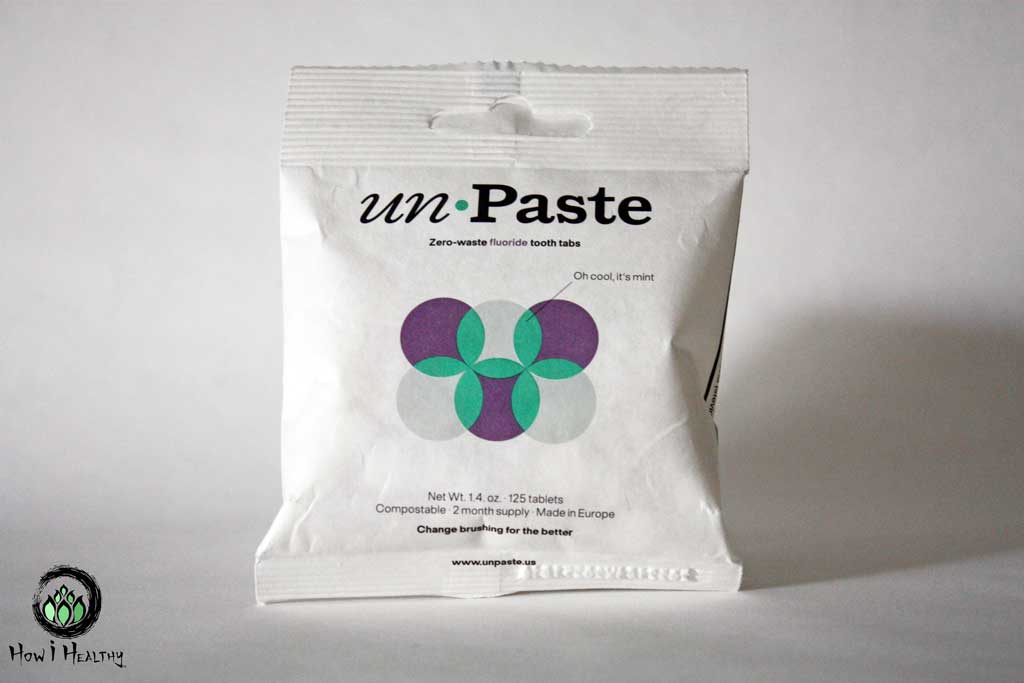
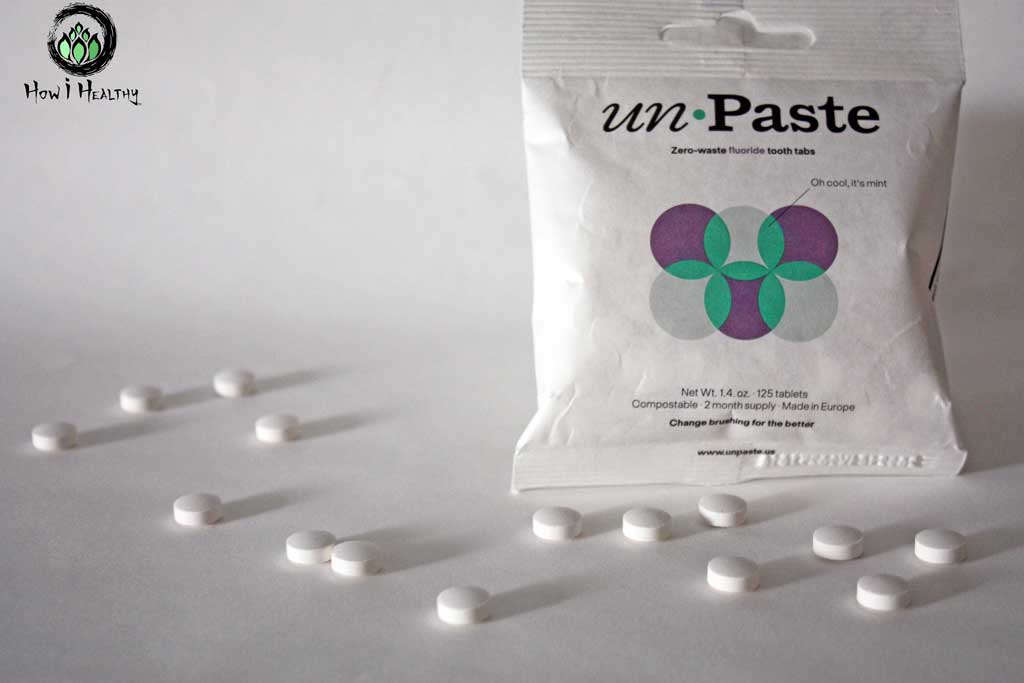
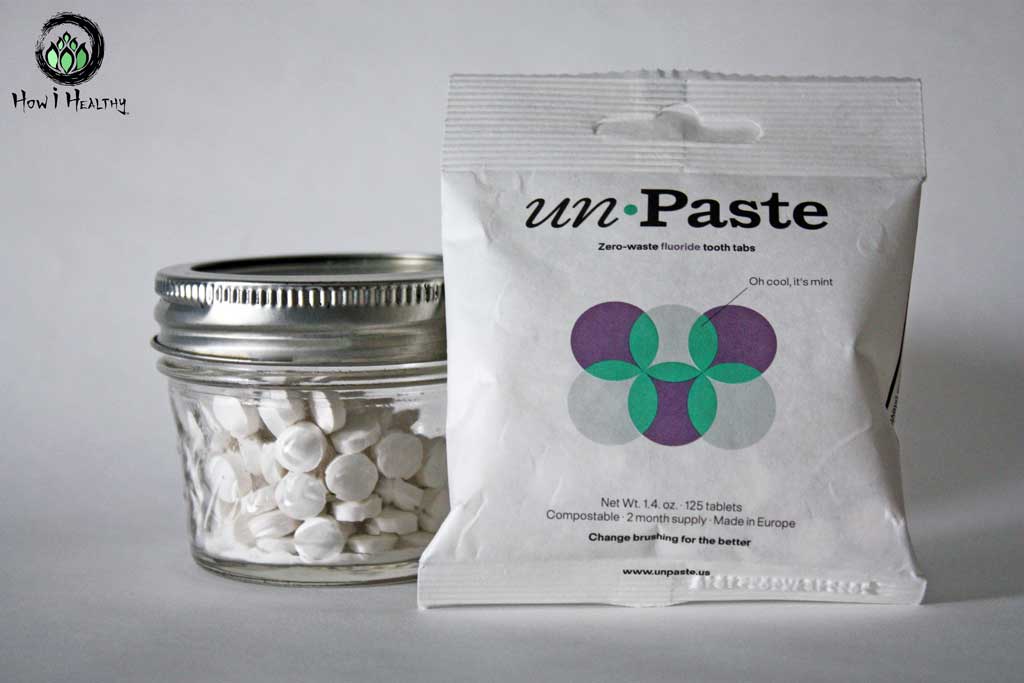




Product Kudos
Origin: Germany.
End of Life: Home compostable & recyclable paper packaging.
Ingredients/Packaging:
- Unpaste™ Tooth Tabs: Microcrystalline Cellulose, Sodium Bicarbonate (baking soda), Silica, Amisoft (Ssodium lauryl glutamate), Magnesium Stearate, Essential Oils (cinnamomum cassia leaf oil OR menthe arvensis leaf oil) Menthol, Xanthan Gum, Stevia, Citric Acid, Sodium Fluoride*. (1) *Only in fluoride option.
- Recycled paper, soy-based ink, non-GMO biofilm lactic acid coating.
Why It’s Awesome:
- FDA registered, BDIH-certified (non-profit that certifies natural cosmetics), and certified for oral hygiene & efficacy by the Aktion-zahnfreundlich e.V., a German non-profit dedicated to effective & safe oral hygiene products.
- Fluoride and fluoride-free options to accommodate all sorts of folks.
- No water, no heavy plastic tubes. This means smaller transportation carbon footprint and no plastic. That said, these are made in Germany, not exactly next door to me. I’m on the lookout for a USA or Canada-made product though!
- Home compostable packaging.
- Mint and cinnamon options.
- Travel friendly.
- Works! Just chew and brush! No chalky or grainy feeling, no fizzing or bubbling. It feels like regular toothpaste.
(1, 2, 3)
Company Kudos
- Leaping Bunny Certified.
- Waterless & carbon-neutral manufacturing.
- Woman-owned company.
(1, 4)
RADIUS® Silk
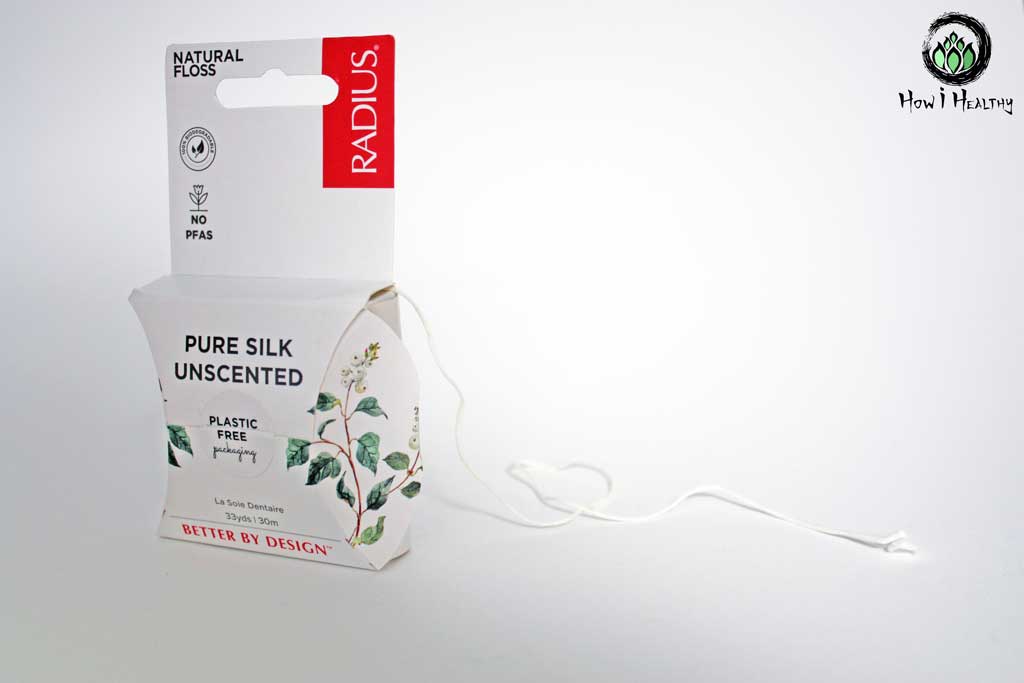


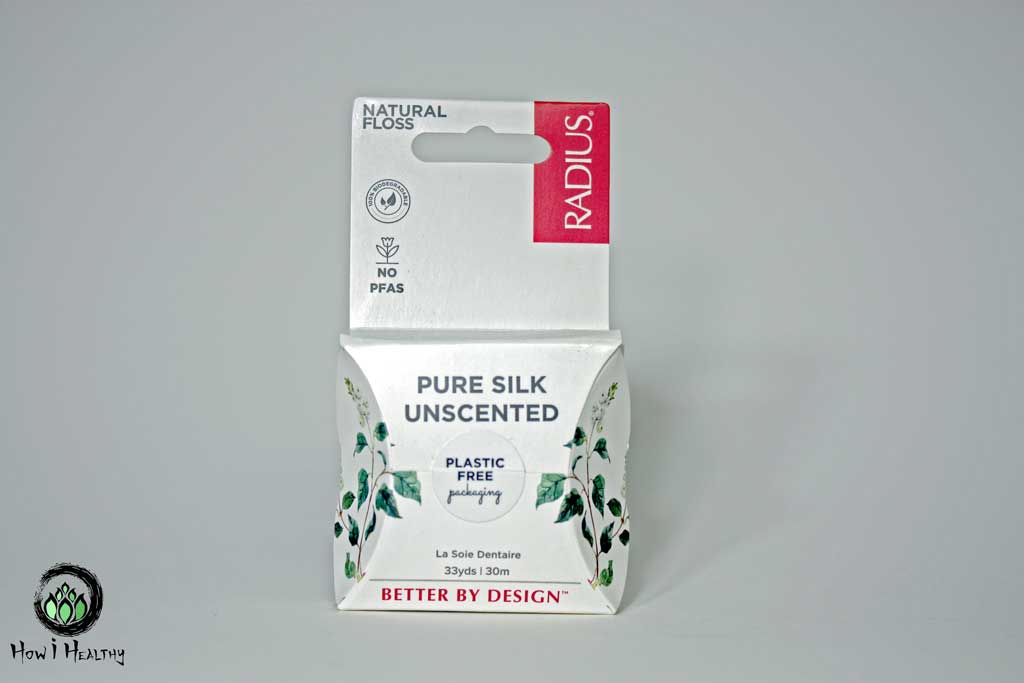

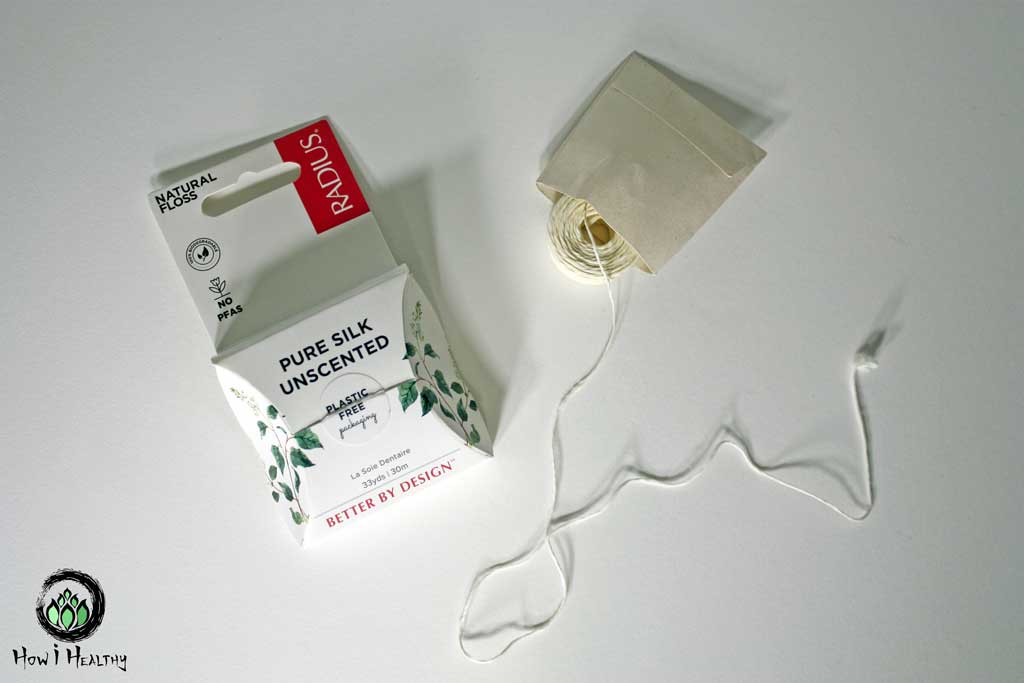

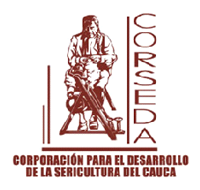

Product Kudos
Origin: Cauca, Colombia from a certified CORSEDA Fair Trade farm cooperative.
End of Life: Home compostable floss & packaging.
Ingredients/Packaging:
- RADIUS® Silk Floss: Natural silk thread & candelilla plant wax.
- Plastic-free paper packaging
Why It’s Awesome:
- Biodegradable and home compostable.
- Certified Fair Trade. The CORSEDA Fair-Trade Co-op supports 80+ families in Cauca, Columbia.
- No plastics, nylon, phthalates, GMOs, preservatives, artificial sweeteners, parabens, or BPA.
(5)
Company Kudos
- For 30 years, RADIUS® has led the way for sustainable business practices, reducing waste, and reinventing how folks clean their teeth.
- Most products (aside from this floss) are produced in the USA with self-generated solar power.
- Woman-owned company.
(5, 6)
The Takeaway Message



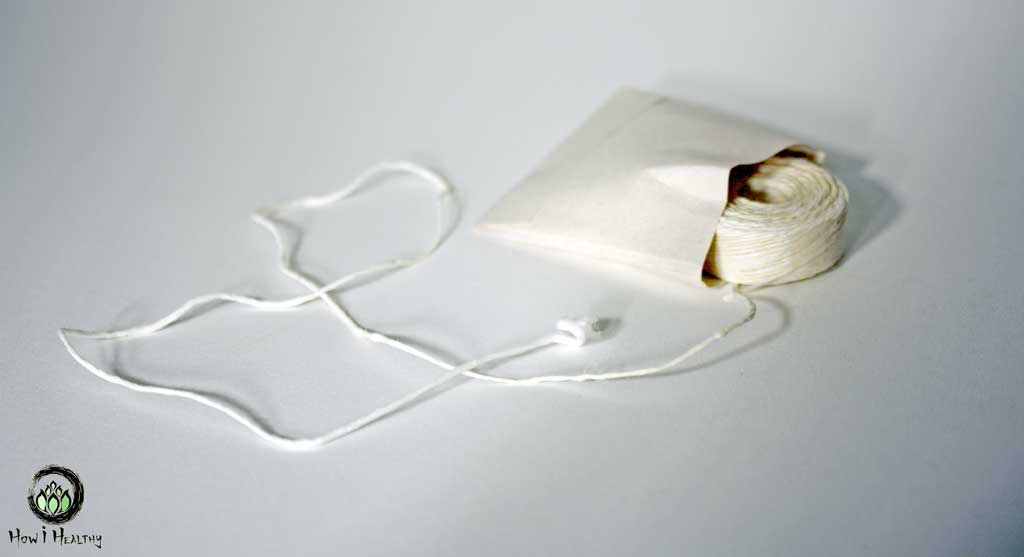







Toothpaste and floss are two single-use plastics that need to step up their sustainability.
First, there’s floss.
AKA Petrochemical plastic string. Non-biodegradable and often coated with per/polyfluoroalkyl substances (PFASs). (26, 27, 28)
PFASs are a linked to a host of health concerns including cancer and infertility. (28)
And, although PFAS are a common contaminate and hard to avoid entirely, I don’t want to deliberately floss with it.
And then there’s toothpaste.
It’s full of potential endocrine-disrupting chemicals like triclosan, phthalates, and parabens. And not to mention microplastics. (Yes, plastic in the toothpaste itself). (7, 13, 14, 15, 24, 25, 29, 30, 31, 32)
Sure, there’s lots of “natural” toothpastes out there these days. Ones without the chemical junk or even microplastics. But many are still packaged in plastic.
It takes 500 years for a single tube to biodegrade in a landfill. (22)
The first plastic toothpaste tubes produced probably still exist. I know every plastic tube I’ve ever thrown away does. Talk about the legacy I don’t want to leave behind!
There are a few plastic-free or recyclable aluminum toothpaste options out there.
But it’s time to take things up a notch and go water-free too.
Why?
Because water adds weight to products. Heavier products mean more transportation emissions. Transportation emissions account for 29% of all greenhouse gas emissions in the US alone. (23, 33)
Lightening loads and lessening bulk means more products per shipment & fewer shipments needed. It’s efficient while reducing carbon emissions. Win Win! (33)
So, with all that in mind, here’s my favorite plastic-free, water-free, and zero waste teeth products!
Want more water-free products?
See My Favorite Products for Shampoo/Conditioner Bars, and Bar Soap That’s Actually Affordable.
And check out this Meliora® Laundry Review. It dives into the best natural & water-free laundry products on the market.
That’s How i Healthy!
-Artemis
- “Better than Toothpaste.” Unpaste™, https://www.unpaste.us/.
- “Über Aktion Zahnfreundlich.” Aktion Zahnfreundlich Zahnmnnchen, https://www.zahnmaennchen.de/aktion-zahnfreundlich/ueber-aktion-zahnfreundlich-aktion-zahnfreundlich/
- Aktion Zahnfreundlich Zahnmnnchen, https://www.zahnmaennchen.de/
- “Unpaste.” Leaping Bunny, https://www.leapingbunny.org/brand/unpaste
- “Help Center.” RADIUS, Natural Silk Floss, https://madebyradius.com/a/faq#hc-how-do-you-harvest-the-silk-for-your-natural-silk-floss.
- “Radius: Shop Eco-Friendly Dental Care on Earthhero.” EarthHero, https://earthhero.com/collections/radius.
- Weatherly, Lisa M, and Julie A Gosse. “Triclosan Exposure, Transformation, and Human Health Effects.” Journal of Toxicology and Environmental Health. Part B, Critical Reviews, U.S. National Library of Medicine, 2017, ncbi.nlm.nih.gov/pmc/articles/PMC6126357/
- “Green Cleaning, Sanitizing, and Disinfecting: A Curriculum for Early Care and Education.” Green Cleaning, Sanitizing, and Disinfecting Toolkit for Early Care and Education, UCSF Institute for Health & Aging, epa.gov/sites/production/files/documents/ece_curriculumfinal.pdf
- Kim, S A, et al. “Bactericidal Effects of Triclosan in Soap Both in Vitro and in Vivo.” The Journal of Antimicrobial Chemotherapy, U.S. National Library of Medicine, Dec. 2015, ncbi.nlm.nih.gov/pubmed/26374612/
- “Triclosan.” National Center for Biotechnology Information. PubChem Compound Database, U.S. National Library of Medicine, https://pubchem.ncbi.nlm.nih.gov/compound/triclosan
- “Lex Access to European Union Law.” EUR, https://eur-lex.europa.eu/legal-content/EN/TXT/?uri=uriserv%3AOJ.L_.2016.021.01.0086.01.ENG&toc=OJ%3AL%3A2016%3A021%3AFULL.
- Commissioner, Office of the. “FDA Issues Final Rule on Safety and Effectiveness of Antibacterial Soaps.” S. Food and Drug Administration, FDA, www.fda.gov/news-events/press-announcements/fda-issues-final-rule-safety-and-effectiveness-antibacterial-soaps
- Dix-Cooper L, Kosatsky T. Use of antibacterial toothpaste is associated with higher urinary triclosan concentrations in Asian immigrant women living in Vancouver, Canada. Sci Total Environ. 2019 Jun 25;671:897-904. https://pubmed.ncbi.nlm.nih.gov/30947060/
- Al Habashneh, Rola et al. “The effect of a triclosan/copolymer/fluoride toothpaste on plaque formation, gingivitis, and dentin hypersensitivity: A single-blinded randomized clinical study.” Quintessence international (Berlin, Germany : 1985) 48,2 (2017): 123-130. doi:10.3290/j.qi.a37384. https://pubmed.ncbi.nlm.nih.gov/27981268/
- Davies, R M et al. “The effectiveness of a toothpaste containing triclosan and polyvinyl-methyl ether maleic acid copolymer in improving plaque control and gingival health: a systematic review.” Journal of clinical periodontology 31,12 (2004): 1029-33. doi:10.1111/j.1600-051X.2004.00614.x. https://onlinelibrary.wiley.com/doi/10.1111/j.1600-051X.2004.00614.x
- Yueh, Mei-Fei, and Robert H Tukey. “Triclosan: A Widespread Environmental Toxicant with Many Biological Effects.” Annual review of pharmacology and toxicology 56 (2016): 251-72. doi:10.1146/annurev-pharmtox-010715-103417. https://pubmed.ncbi.nlm.nih.gov/26738475/
- Fu, Jing et al. “The toxic effect of triclosan and methyl-triclosan on biological pathways revealed by metabolomics and gene expression in zebrafish embryos.” Ecotoxicology and environmental safety 189 (2020): 110039. doi:10.1016/j.ecoenv.2019.110039. https://www.sciencedirect.com/science/article/abs/pii/S0147651319313703?via%3Dihub
- Lankester, Joanna, et al. “Urinary Triclosan Is Associated with Elevated Body Mass Index in Nhanes.” PLoS ONE, vol. 8, no. 11, 2013, https://journals.plos.org/plosone/article?id=10.1371/journal.pone.0080057. https://journals.plos.org/plosone/article?id=10.1371/journal.pone.0080057
- Hua, Rui, et al. “Urinary Triclosan Concentrations and Early Outcomes of in Vitro Fertilization-Embryo Transfer.” Reproduction, vol. 153, no. 3, 2017, pp. 319–325., https://doi.org/10.1530/rep-16-0501. https://rep.bioscientifica.com/view/journals/rep/153/3/319.xml
- Pollock, Tyler, et al. “Associations among Urinary Triclosan and Bisphenol A Concentrations and Serum Sex Steroid Hormone Measures in the Canadian and U.S. Populations.” Environment International, vol. 146, 2021, p. 106229., https://doi.org/10.1016/j.envint.2020.106229. https://www.sciencedirect.com/science/article/pii/S016041202032184X?via%3Dihub
- Bråte, Inger Lise N et al. “Weathering impacts the uptake of polyethylene microparticles from toothpaste in Mediterranean mussels (M. galloprovincialis).” The Science of the total environment 626 (2018): 1310-1318. doi:10.1016/j.scitotenv.2018.01.141. https://pubmed.ncbi.nlm.nih.gov/29898538/
- 300 Million Toothpaste Tubes Go to Landfill. British Dental Journal Volume 230, 390, Apr. 2021, https://doi.org/10.1038/s41415-021-2926-y. https://www.nature.com/articles/s41415-021-2926-y
- “Carbon Pollution from Transportation.” EPA, Environmental Protection Agency, https://www.epa.gov/transportation-air-pollution-and-climate-change/carbon-pollution-transportation
- Usman, Sunusi et al. “Microplastics Pollution as an Invisible Potential Threat to Food Safety and Security, Policy Challenges and the Way Forward.” International journal of environmental research and public health 17,24 9591. 21 Dec. 2020, doi:10.3390/ijerph17249591. https://pubmed.ncbi.nlm.nih.gov/33371479/
- Madhumitha CT, Karmegam N, Biruntha M, Arun A, Al Kheraif AA, Kim W, Kumar P. Extraction, identification, and environmental risk assessment of microplastics in commercial toothpaste. Chemosphere. 2022 Jun;296:133976. doi: 10.1016/j.chemosphere.2022.133976. Epub 2022 Feb 14. PMID: 35176298. https://pubmed.ncbi.nlm.nih.gov/35176298/#:~:text=The%20maximum%20number%20of%20microplastics,polyamide%20in%20the%20toothpaste%20samples
- Dörfer, C E et al. “Gliding capacity of different dental flosses.” Journal of periodontology 72,5 (2001): 672-8. doi:10.1902/jop.2001.72.5.672. https://aap.onlinelibrary.wiley.com/doi/abs/10.1902/jop.2001.72.5.672
- Ciancio, S G et al. “Clinical evaluation of the effect of two types of dental floss on plaque and gingival health.” Clinical preventive dentistry 14,3 (1992): 14-8.
- Boronow, K.E., Brody, J.G., Schaider, L.A. et al.Serum concentrations of PFASs and exposure-related behaviors in African American and non-Hispanic white women. J Expo Sci Environ Epidemiol29, 206–217 (2019). https://www.nature.com/articles/s41370-018-0109-y. https://www.nature.com/articles/s41370-018-0109-y
- Praveena, Sarva Mangala et al. “Exploration of microplastics from personal care and cosmetic products and its estimated emissions to marine environment: An evidence from Malaysia.” Marine pollution bulletin 136 (2018): 135-140. doi:10.1016/j.marpolbul.2018.09.012. https://pubmed.ncbi.nlm.nih.gov/30509794/
- Ustabasi, Gul Sirin, and Asli Baysal. “Occurrence and risk assessment of microplastics from various toothpastes.” Environmental monitoring and assessment 191,7 438. 15 Jun. 2019, doi:10.1007/s10661-019-7574-1. https://pubmed.ncbi.nlm.nih.gov/31203457/
- Philippat, Claire et al. “Exposure to select phthalates and phenols through use of personal care products among Californian adults and their children.” Environmental research 140 (2015): 369-76. doi:10.1016/j.envres.2015.04.009. https://pubmed.ncbi.nlm.nih.gov/25929801/
- Harley, Kim G et al. “Reducing Phthalate, Paraben, and Phenol Exposure from Personal Care Products in Adolescent Girls: Findings from the HERMOSA Intervention Study.” Environmental health perspectives 124,10 (2016): 1600-1607. doi:10.1289/ehp.1510514. https://pubmed.ncbi.nlm.nih.gov/26947464/
- Berners-Lee, Mike. How Bad Are Bananas?: The Carbon Footprint of Everything. Profile Books, 2010.
- Jardim, Juliana Jobim et al. “The history and global market of oral home-care products.” Brazilian oral research 23 Suppl 1 (2009): 17-22. https://www.scielo.br/j/bor/a/NLF8R3RWvyCGJnZmbcvRtkk/?lang=en. https://www.researchgate.net/publication/38019695_The_history_and_global_market_of_oral_home-care_products
- Lippert, Frank. “An introduction to toothpaste – its purpose, history and ingredients.” Monographs in oral science 23 (2013): 1-14. doi:10.1159/000350456. https://pubmed.ncbi.nlm.nih.gov/23817056/
- Al Sadhan, Ra’ed I., and Khalid Almas. “Miswak (Chewing Stick): A Cultural And Scientific Heritage.” Saudi Dental Journal, vol. 11, no. 2, ser. 80-88, 1999. 80-88. https://www.scribd.com/document/20941734/Miswak-Chewing-Stick-a-Cultural-and-Scientific-Heritage#
- Christen, Arden G, and Joan A Christen. “A historical glimpse of toothpick use: etiquette, oral and medical conditions.” Journal of the history of dentistry 51,2 (2003): 61-9. https://pubmed.ncbi.nlm.nih.gov/12846259/
- Parmly, Levi Spear, and Joseph R. A. Skerrett. A Practical Guide to the Management of the Teeth: Comprising a Discovery of the Origin of Caries, or Decay of the Teeth, with Its Prevention and Cure. Collins & Croft, 1819.
- Sanoudos, M, and A G Christen. “Levi Spear Parmly: the apostle of dental hygiene.” Journal of the history of dentistry 47,1 (1999): 3-6.
- Zhou, Zhong-Rong, et al. Dental Biotribology. Springer New York, 2013.
- Nordin, Abid, et al. “Miswak and Oral Health: An Evidence-Based Review.” Saudi Journal of Biological Sciences, vol. 27, no. 7, 2020, pp. 1801–1810., https://doi.org/10.1016/j.sjbs.2020.05.020. https://www.sciencedirect.com/science/article/pii/S1319562X20301893?via%3Dihub
- Saha, Sonali et al. “Efficiency of traditional chewing stick (miswak) as an oral hygiene aid among Muslim school children in Lucknow: A cross-sectional study.” Journal of oral biology and craniofacial research 2,3 (2012): 176-80. doi:10.1016/j.jobcr.2012.10.009. https://pubmed.ncbi.nlm.nih.gov/25737862/
- Laird, Lance D et al. “Looking Islam in the Teeth: The Social Life of a Somali Toothbrush.” Medical anthropology quarterly 29,3 (2015): 334-56. doi:10.1111/maq.12196. https://pubmed.ncbi.nlm.nih.gov/25684459/
- Sharma, Abhishek et al. “Effect of traditionally used neem and babool chewing stick (datun) on streptococcus mutans: an in-vitro study.” Journal of clinical and diagnostic research : JCDR 8,7 (2014): ZC15-7. doi:10.7860/JCDR/2014/9817.4549. https://pubmed.ncbi.nlm.nih.gov/25177629/
- Harris, Norman O., and García-Godoy Franklin. Primary Preventive Dentistry. Appleton & Lange, 1999.
- Petroski, Henry. The Toothpick: Technology and Culture. Vintage Books, 2008.
- Napoleon’s Toothbrush, Europe, 1790-1821. Science Museum, London. Attribution 4.0 International (CC BY 4.0)
- Science Museum Group. Indexo finger toothbrush. A619222Science Museum Group Collection Online. Accessed December 16, 2021. https://collection.sciencemuseumgroup.org.uk/objects/co101875/indexo-finger-toothbrush-toothbrush
- Keoke ED, Porterfield KM (2002). Encyclopedia of American Indian contributions to the world 15,000 years of inventions and innovations. New York, NY. p. 180. ISBN 978-1-4381-0990-9.
- Kezian, Steven A. (2020) “The History of the Dental Profession – From Ancient Origins to Modern Day,” Pacific Journal of Health: Vol. 3 : Iss. 1 , Article 2. Available at: https://scholarlycommons.pacific.edu/pjh/vol3/iss1/
- Asbell, Milton B. Dentistry: a Historical Perspective: Being a Historical Account of the History of Dentistry from Ancient Times, with Emphasis upon the United States from the Colonial to the Present Period. Dorrance & Co., 1988.
- Oxilia, G., Peresani, M., Romandini, M. et al. Earliest evidence of dental caries manipulation in the Late Upper Palaeolithic. Sci Rep 5, 12150 (2015). https://www.nature.com/articles/srep12150. https://www.nature.com/articles/srep12150
- Coppa, A., Bondioli, L., Cucina, A. et al. Early Neolithic tradition of dentistry. Nature 440, 755–756 (2006). https://www.nature.com/articles/440755a. https://www.nature.com/articles/440755a
- Bernardini, F. et al. Beeswax as Dental Filling on a Neolithic Human Tooth. PLoS One 7, e44904 (2012)
- Xu Y, MacEntee MI. The roots of dentistry in ancient China. J Can Dent Assoc. 1994 Jul;60(7):613-6. https://pubmed.ncbi.nlm.nih.gov/8062165/
- Blomstedt P. Dental surgery in ancient Egypt. J Hist Dent. 2013;61(3):129‐
Want More?
I’ve got a thing for water-free products.
Just check out this Sustainable & Ethical Body Care Routine and the Zero-Waste & Water-Free House Cleaning Guide for more water-free awesomeness.
What’s also awesome?
Books!
Here’s two about dentistry that I found fascinating:
Smile Stealers: The Fine & Foul Art of Dentistry
By Richard Barnett
Don’t mind slightly gruesome history full of historical medical illustrations & photographs? This is your book! Historians, art lovers, dental professionals, technologists, and folks who can stomach early medical practice can find topics of intrigue.
Barnett, medical historian and author of several gruesome visual histories, covers dentistry through the ages in Smile Stealers. Easy prose and visuals abound make this history book a fun (but still unnerving) read.
Buy at: Bookshop® or Better World Books®
Teeth: The Story of Beauty, Inequality, & the Struggle for Oral Health in America
By Mary Otto
Why did 12 year-old Deamonte Driver die from an abscessed tooth in 2007?
Why is dental coverage not included in medical insurance? What impact does this have on public health and funding?
Why are American dental associations lobbying against expanding dentistry access?
We find the answers at the intersection of dentistry, systematic inequality & racism, unemployment, education, and public policy. Otto, a medical journalist, exposes America’s dental profession, its history, and how both perpetuate today’s oral health crisis.
Buy at: Bookshop® or Better World Books®
